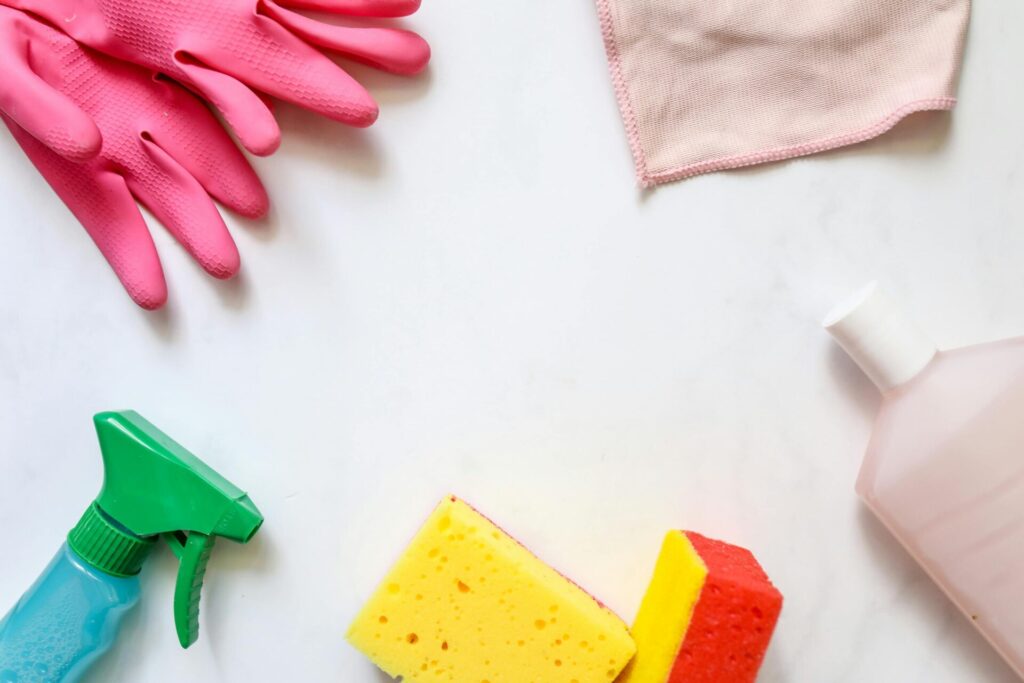7 Cleaning Mistakes You Didn’t Know Could Harm Your Health

“Proud Homemaker is part of several affiliate marketing programs, so we may earn commissions on products selected and purchased through our retailer links.”
Cleaning is supposed to keep your home fresh and healthy, but what if some of your habits are doing the opposite? Believe it or not, common cleaning mistakes can create hidden health risks you never imagined. From overusing certain cleaning products to ignoring sneaky problem areas, these missteps can affect your air quality, trigger allergies, or even spread germs instead of getting rid of them. So, while you may think you’re doing everything right to keep your space spotless, a few unnoticed habits might actually be harming your well-being.
We all want a clean, comfortable home that feels safe for our families, but understanding the impact of improper cleaning techniques is essential. Whether it’s skipping crucial areas like door handles or misusing disinfectants, avoiding these mistakes can make a big difference. If you’ve been experiencing allergies, respiratory issues, or unexplained fatigue, your cleaning routine might be partially to blame. Ready to discover the 7 cleaning blunders you should fix to protect your health? Let’s dive into how to make your space truly clean and safe!
1. Not Opening Windows While Cleaning
Did you know that keeping your windows closed while cleaning can trap harmful fumes and pollutants inside your home? Many cleaning products release strong chemicals, such as ammonia or bleach, which can linger in the air and irritate your eyes, throat, or lungs. Without proper ventilation, these toxins accumulate, reducing indoor air quality and potentially triggering allergies, headaches, or respiratory issues.
Additionally, activities like dusting or vacuuming can stir up allergens, dust mites, and pet dander. If windows remain shut, there’s no escape route for these airborne irritants, making the air inside your home feel heavier and less breathable. To prevent this, always crack open a window or turn on an exhaust fan while cleaning. Fresh airflow can help dissipate harmful particles, ensuring your space is not only clean but also safe and healthy for your family.
2. Reusing the Same Sponge for Dishes and Countertops
Using the same sponge to clean both dirty dishes and kitchen countertops may seem convenient, but it’s a major hygiene mistake. Sponges are notorious for harboring bacteria, especially when used on various surfaces. When you switch between dishes and countertops without using separate sponges, you risk spreading harmful germs like E. coli or salmonella. This can lead to cross-contamination, making your kitchen less safe instead of cleaner.
Even if your sponge looks clean, it might still carry invisible pathogens. Countertops often come into contact with raw food, spills, and dust, while dirty dishes harbor grease and food particles. To avoid this health hazard, keep separate sponges or cleaning tools for each task. Replace your sponges frequently, disinfect them regularly, and consider alternatives like microfiber cloths for added cleanliness and safety in your kitchen.
Read also: Best Way To Clean Your Kitchen Towel
3. Cleaning Dishes While Ignoring the Sink
Your kitchen sink may look clean after you finish washing the dishes, but it’s actually a hotspot for germs and bacteria. Food particles, grease, and soap residue can build up over time, creating an ideal environment for harmful microorganisms like salmonella and E. coli to thrive. If you’re scrubbing your dishes spotless but skipping the sink, you might be undoing your hard work by reintroducing germs to clean utensils and plates.
To keep your sink hygienic, it’s essential to give it regular attention. After finishing the dishes, rinse away debris, then scrub the sink with a mild cleaner or a mix of vinegar and baking soda. Don’t forget to clean the drain and faucet handles, as these are often overlooked. By making sink cleaning a part of your dishwashing routine, you can ensure a safer, more sanitary kitchen.
4. Cleaning Dust with a Dry Cleaning Cloth
Using a dry cleaning cloth to dust might seem like a quick fix, but it can actually make things worse. Instead of trapping dust, a dry cloth often just moves it around, spreading allergens and debris into the air, where they can be inhaled. This can trigger allergies, asthma, and respiratory issues, especially in people who are sensitive to dust mites and other particles.
For more effective dusting, it’s important to use a slightly damp cloth or a microfiber one, which is designed to attract and hold onto dust, rather than disperse it. Microfiber cloths, in particular, are great because they pick up dust and dirt without needing chemicals, leaving surfaces cleaner and healthier. By switching to a damp cloth or microfiber, you can reduce airborne dust and allergens, improving your home’s air quality and ensuring a safer, healthier environment.
5. Cleaning the Shower but Ignoring the Showerhead
While it’s essential to clean your shower regularly, many people forget an important area—the showerhead. Over time, mineral deposits, soap scum, and bacteria can build up on the showerhead, leading to clogged nozzles and reduced water flow. This buildup creates a perfect environment for mold and mildew, which can easily spread into your shower and lead to unpleasant odors or respiratory issues when exposed.
To ensure your shower is thoroughly cleaned and safe, don’t skip the showerhead. Regularly soak it in a vinegar solution to dissolve mineral deposits and sanitize it. You can also gently scrub the nozzles with a toothbrush to remove any stubborn buildup. By including the showerhead in your cleaning routine, you’ll ensure better water flow, reduce the growth of harmful bacteria, and maintain a healthier shower environment overall.
6. Skipping the Interior When Cleaning the Fridge
It’s easy to wipe down the outside of your fridge and call it a day, but neglecting the interior can lead to a build-up of bacteria, mold, and unpleasant odors. Spills, expired food, and crumbs can accumulate in the fridge over time, creating a breeding ground for germs that could contaminate your food. Left unchecked, this can lead to foodborne illnesses or allergic reactions, especially when the fridge isn’t properly sanitized.
To keep your fridge safe and hygienic, make it a habit to clean the interior regularly. Remove expired items, wipe down shelves with a mild cleaner, and pay special attention to corners and drawers where spills are likely to hide. A clean fridge doesn’t just look better; it helps prevent bacteria growth and ensures your food stays fresh. Regular interior cleaning is key to maintaining a healthier kitchen and minimizing health risks.
7. Wiping Down Surfaces Without Disinfecting
Wiping down surfaces may seem like enough to keep your home clean, but if you’re not disinfecting them, you could be leaving harmful germs behind. While cleaning removes dirt and debris, it doesn’t necessarily kill bacteria or viruses. Simply wiping down high-touch areas like doorknobs, light switches, and countertops with a cloth can spread germs around without eliminating them. This leaves your home vulnerable to illness, especially during flu season or in households with young children or immunocompromised individuals.
To ensure your surfaces are truly sanitized, it’s important to use a disinfectant after cleaning. Choose products that are effective against viruses and bacteria, or use natural disinfectants like vinegar or hydrogen peroxide. Make disinfecting part of your routine, particularly in areas that see a lot of traffic or food preparation, to create a healthier environment and reduce the spread of harmful pathogens.
Summary From Proud Homemaker!
Cleaning your home is essential for keeping it fresh and healthy, but it’s easy to make a few mistakes that could end up causing more harm than good. From skipping disinfecting after wiping surfaces to neglecting your showerhead, these little slip-ups can lead to bacteria, mold, and allergies creeping in. The good news is, that most of these mistakes are easy to fix with just a few simple changes to your cleaning routine. So, next time you’re cleaning, remember to be mindful of the details—because a truly clean home is one that’s not only tidy but also safe and healthy for everyone living there!







2 Comments